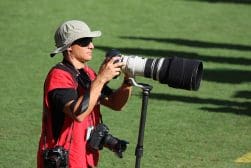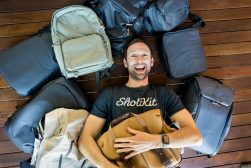
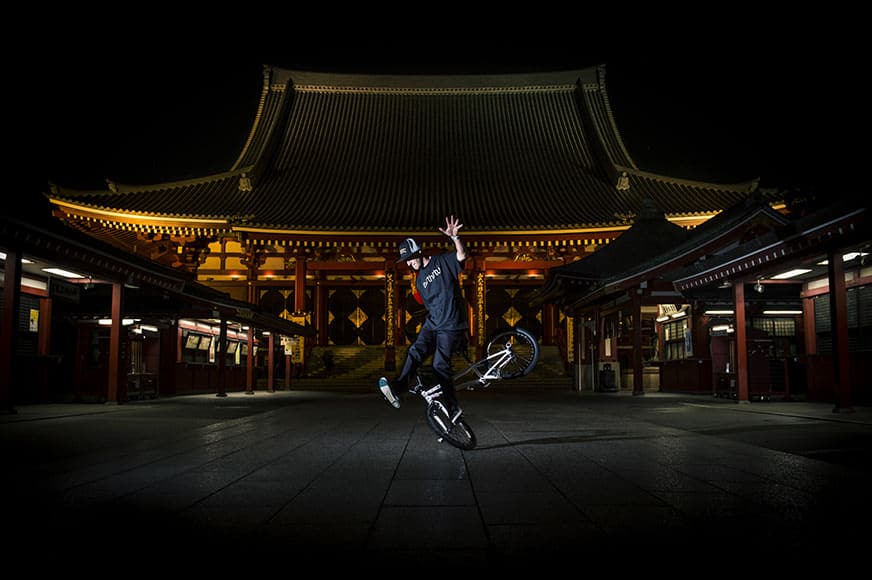
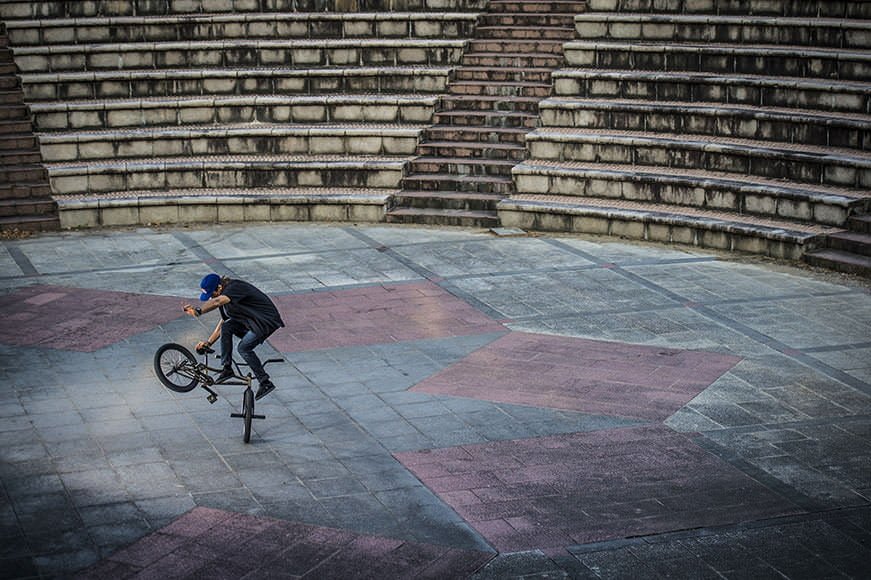


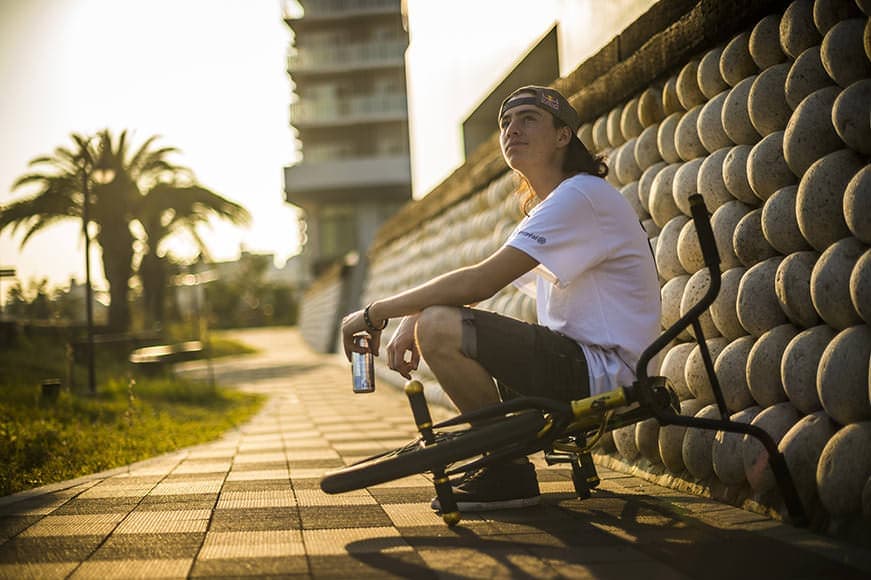

Jason Halayko
Commercial, Sports | Last Updated: April 4, 2024
Konnichiwa (hello) my name is Jason Halayko, and although I live and work in Japan, I am actually Canadian born with Ukrainian roots. I first got into photography in high school through the recommendation of my friend Vince. He said it would be an easy A and fun to play in the dark room the school had. It was a lot of fun, and I got A’s both years, but there was nothing “easy” about it.
Fast forward 20 years and I now find myself based in Kyoto, Japan, (been living here over 11 years) and working as a photographer for various companies such as Red Bull, Casio, Puma, Sony, Hanshin Tigers (local baseball team), and others. The main type of work I do would be covering various action sports, breakdancing, DJ, club and other events, but I also do a fair amount of portrait and lifestyle work as well.
As there are a huge variety of events that I am asked to cover, each with their own characteristics and challenges, I have built my kit to be portable and yet versatile.
One week I might be at a rural Japanese temple in the middle of nowhere shooting a downhill mountain bike race, and the next week in a club in Shibuya covering some of the world’s best DJs as they kill their set in front of hundreds of screaming people. And although these events seem very different, my approach to each shoot is actually very similar.
I like to use just one camera while shooting, which is currently the Nikon D4s (although I am already drooling over the Nikon D5
). I have used this camera since it first came out and have never had a single issue with it, so it is my workhorse camera 100% of the time during work shoots.
Saying that, I change my lenses up during a shoot many times, depending on the lighting, size of the venue, and how/what I am shooting at the moment. I change my lenses as this allows me to get different looks and types of images, and to get a wider variety of photos at the end of the shoot, which helps my images stick out and be noticed.
Also, magazines/websites will often prefer to get a variety of images instead of a bunch of photos all taken from the same spot with the same lens.
So what lenses do I use you ask? I use 5 different lenses while shooting.
Nikon 16mm Fisheye: Although not a lens I use during every shoot I do, I find there are moments where the fisheye really comes in handy to give a different look to a photo that a “normal” lens just can’t get. In action shots especially this allows you to get super close (almost too close sometimes) to the action.
I also use it a lot when shooting DJs so I can get the DJ and the whole turntable set up in one shot. This lens is not the fastest when trying to autofocus, but it is lots of fun to use once you get used to it.
Nikon 24mm f/1.4 Prime: This is my go-to lens when covering DJing events like the Red Bull Thre3Style World Championships that were held in Shibuya, Japan last year. Many times in clubs the light is much less than I would like, so the 1.4 aperture is a must. But with the Nikon 24mm f/1.4 I find the bokeh is not over exaggerated so the image still looks good and not over-bokehed (is that a word??).
I also enjoy using this lens when shooting street photography as it gives a really nice unique look to the images.
Nikon 24-70mm f/2.8: When shooting breakdancing, flatland, or other events with a stage, I find the Nikon 24-70mm f/2.8
is a great range to allow a variety of shots without having to change my lens. Even if the performer comes relatively close, the 24mm is wide enough, but I can also zoom in to 70mm and get nice medium shots of the performers with the background or their competitors in the image as well.
Plus, the 2.8 aperture is a must as these events tend to be on the darker side of lighting, so the wider aperture helps me keep my ISO lowish, with a faster shutter speed.
Nikon 50mm f/1.4 prime: This is my go-to lens for shooting smaller details that I find around event venues, and a lens I love to use for street photography as well. When shooting in harsher light conditions this lens will produce quite a bit of chromatic aberration (a kind of purplish outline) but that can be fixed in PS easy enough so I don’t worry about it too much.
I have also been challenging myself these days and trying to use this lens when shooting FMX and other action sports. Getting the focus right with a 1.4 aperture can be difficult, but I like how it looks different from what I normally shoot.
This lens is also a lot of fun to use with portraits as the bokeh is much more pronounced than the other lenses I have, so I have been using it a lot for that as well this last year.
Nikon 70-200mm f/2.8: Another lens I use A LOT. It’s great for all types of shooting from action sports to portraits, and is a well built beast of a lens that seems to be able to take a kicking and keep on shooting. I find the autofocus of this lens to be nice and fast as well so I use it a lot when shooting FMX, breakdancing, BMX and other action sports.
With 90% of the shooting I do the 200mm focal length is more than enough, but for the times I need a boost I use a small Nikon TC-17 E 1.7x teleconverter that attaches between the camera and lens. It is small, light, and helps in a pinch. Maybe one day I will be able to afford a 300mm or 600mm lens, but for now this fine for me and the type of shooting I do on a regular basis.
Other equipment I tend to use a lot would be my Elinchrom Quadra flash unit and Nikon SB-800
and Nikon SB-900
. When more power is needed (sunset FMX shooting) or I am shooting portraits I tend to stick to the Quadra for the main light and use the SBs as rim light or fill light as needed. I also use the SB units a lot in clubs while shooting DJs as they are great for adding a light behind/beside the DJ, and are small enough that they don’t get in the way.
To fire the flashes while shooting I have 4 Pocket Wizard Flex TT5s for Nikon that work great with all the units at the same time, with hypersync, which is really helpful when shooting action sports with the flash.
Furthermore, when shooting portraits with the Quadra I love using the big octobox soft box Elinchrom has. It is a bit of a pain to set up at first, but it is really nice to use once you have the hang of it.
Lastly, to lug all this stuff around I have three F-Stop bags that I have been using for several years now. My main bag is the F-Stop Satori with a XL-sized ICU, and it carries various combinations of camera/lenses/flashes/clothes/memory cards/computer, etc depending on the type of shoot I will be doing and how long I will be away from home.
When taking the Quadra with me for a one day-three day shoot I will use a roller bag from F-Stop that will fit the unit/head/SBs/Pocket Wizards/computer/as well as a couple t-shirts, etc. This is a great combination of bags that I use a lot while traveling on the bullet trains here in Japan.
The last bag I have is a medium sized F-Stop bag called the Ando (I think) and this is where I toss all my flash equipment, which I then put in a larger bag for when I am flying/staying more than a couple days an need more clothes and that.
All in all these bags have been great and I am super happy using them.
So thats about it. Thank you to ShotKit for this wonderful opportunity. I hope this was helpful for you.

Check out these 8 essential tools to help you succeed as a professional photographer.
Includes limited-time discounts.









